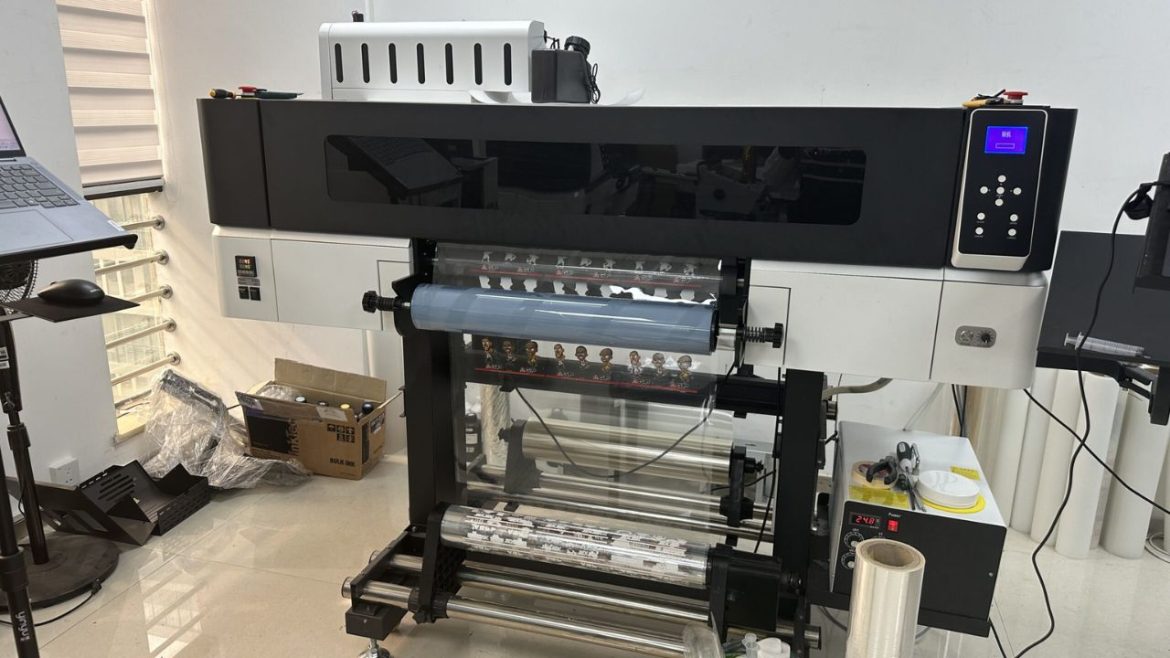UV DTF printing is the game changer in the current environment of custom printing technologies, which provide businesses with an intense print that is durable and broad in application. UV DTF (Ultra Violet Direct-to-film) is a shortened name of Ultra Violet Direct to Film: a process that comprises the real-time accuracy of UV printing, with the versatility of transfer printing used with adhesive film. The technology is fast becoming popular in many industries, and it is an effective replacement for other conventional techniques, like screen printing, sublimation, and heat transfer vinyl. The uv dtf printing remains a unique alternative as the need to satisfy customers with quick customization and high-quality finishing increases.
How Does UV DTF Printing Work?
UV DTF printing is, at its basic level, just a two-step process. At first, the required picture is printed on a specially coated PET film under the UV printer using UV-curable inks. Ultraviolet light is then used to cure this image in an instant, and this hardens the ink on the film surface. Once printed upon, the laminating film is applied to form the transfer layer that can later be peeled off and directly attached to several surfaces. After transferring an image to the final product, then by peeling the film off, we are left with a beautiful, detailed image.
In contrast to conventional DTF printing that commonly involves heat and powder adhesive, UV DTF applies to pressure-sensitive adhesion and UV curing; thus, it is cleaner and more efficient for a wider scope of materials. It has removed the requirement to use heat presses or have lengthy drying processes, which are far slower than other production improvements, but quality remains unaffected.
UV DTF Benefits
There are a number of advantages that are associated with using UV DTF printing technology, which makes it desirable to both large-volume manufacturers and smaller businesses. Among the most impressive advantages, one would notice that it works with many different surfaces. UV DTF can be used on items made of glass, metal, plastic, acrylic, leather, wood, and so on; thus, it is highly suitable to imprint on drinkware, phone cases, signs, packaging, home décor, and so forth.
The other outstanding quality of UV DTF is the quality of prints made. It is famous as a print medium whose colours are very true to life, crisply detailed, and the texture is raised, providing an expensive feel and tactile look. Moreover, the prints are waterproof, scratchproof, and fade-free, which pretends to their long service life and allows using it both indoors and outside.
Industrial Applications of Real World
The versatility of UV DTF printing has seen it gain solid grounds into different businesses. It enables companies to easily make customized products in the retail and product customization sectors in a manner that is very attractive. Whether it is custom water bottles and promotional merchandise, custom boutique signage and novelty items, the creativity can be enormous.
UV DTF is also being utilized in the packaging industry as a means of making the brand name labels and decorations on bottles, jars, and containers. It is luxurious with appearances, but also durable in diverse handling and storing conditions. This is particularly helpful on cosmetics, high-end foods and limited editions of product line.
Future and the UV DTF Trends
The UV DTF market is also experiencing constant innovation as more and more people require customized products both at the consumer and commercial levels. Among them, the trend towards the creation of more compact and cheaper UV DTF printers should be highlighted, making it possible to enter this segment even with a small business or independently, and without major investments of capital.
Increased focus is also on green printing. UV ink makers are looking at low-VOC inks and recyclable films so as to meet the sustainability targets. Also, software integration and automation is becoming the norm and is aiding in streamlining the design-to-print process, as well as minimizing human error.
Conclusion
UV DTF printing has already established itself as one of the most important trends in printing, specifically custom printing, with unmistakable advantages of flexibility, quality, and efficiency. The fact that it can stick on a variety of surfaces and create a strong, colorful, and long-lasting image makes it suitable for a broad scope of industries, including retail and packaging industries or even interior design. UV DTF is emerging as a technology that is dictating the future of digital printing even more as the world embraces more technology that is personalized and in strong demand.
